The stepping stones look fairly precarious when the Goyt was in full flow. But I think the painter has used some artistic license to make them appear even worse than they actually were. I’m sure the scale of the girl has been reduced to make her appear a lot smaller in relation to the stones. The hand-painted photo (inset) shows the same scene.
Many of Michael’s extensive collection are already featured elsewhere on the website (see Corrie’s collection), so I’ve only included those that don’t appear on other pages.
At this time the lane ran alongside Shooter’s Clough, all the way to the gates beside Errwood Cottage. But it was diverted during the construction of Errwood Reservoir, and now exits above the slope leading down to Errwood Hall car park.
When the water level is low, it’s possible to spot the lane as it runs under the modern bridge, just before the car park.
I think this rising path may be the one described in an 1880 report of a visit to Errwood Hall: “a footpath on the right high above the carriage-way. It is a lovers’ walk; a deep-green wooded way made for Phillida and Corydon“.
I haven’t been able to discover any signs of the path, but I think it’s close to where Shooter’s Clough flows under the track leading to the ruins of the hall (see map above left).
If anyone can help identify the exact spot, please leave a comment below or send me a message.
It was dismantled some time in the ’60s, after the road between the twin reservoirs had been completed. Click here for more information on the suspension bridge.
It’s easy to picture the scene as the two locals carried the bench from the side of the pub and took their rest, whilst the driver and his horse remained as still as possible.
But I do wonder why the printers bothered to publish both cards. Perhaps some buyers felt the men were spoiling the scene. But to my eyes, they add significant interest.

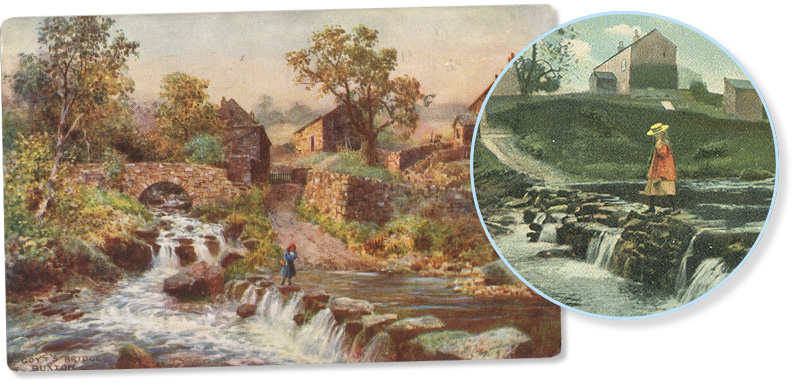
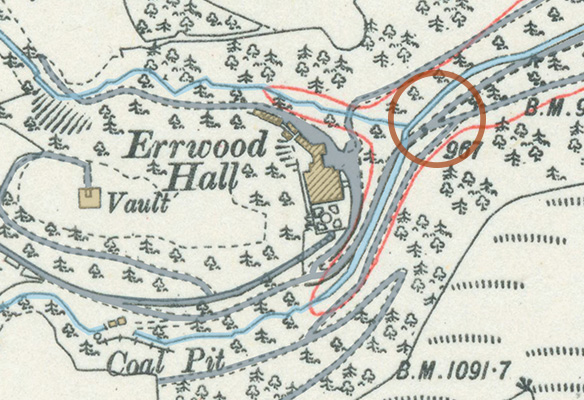
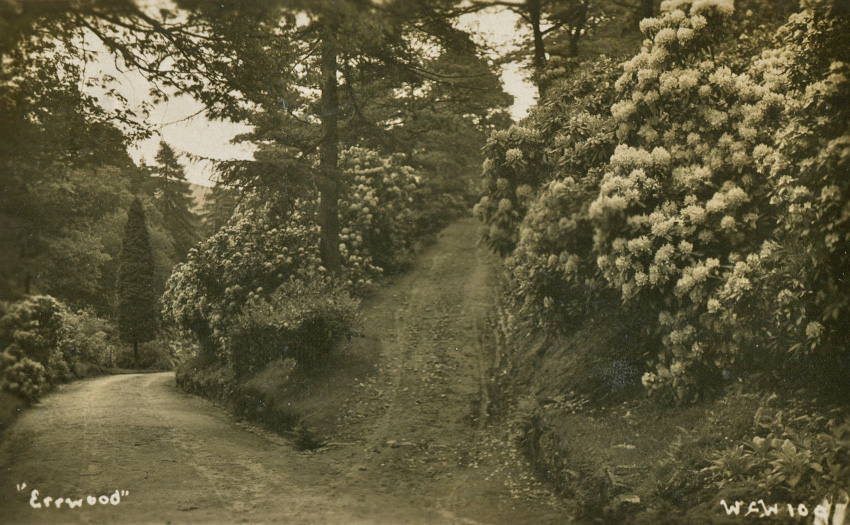
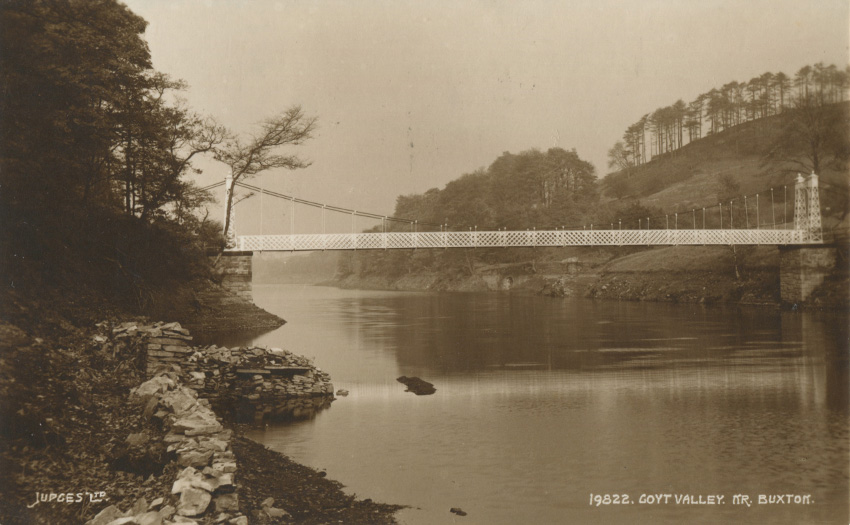
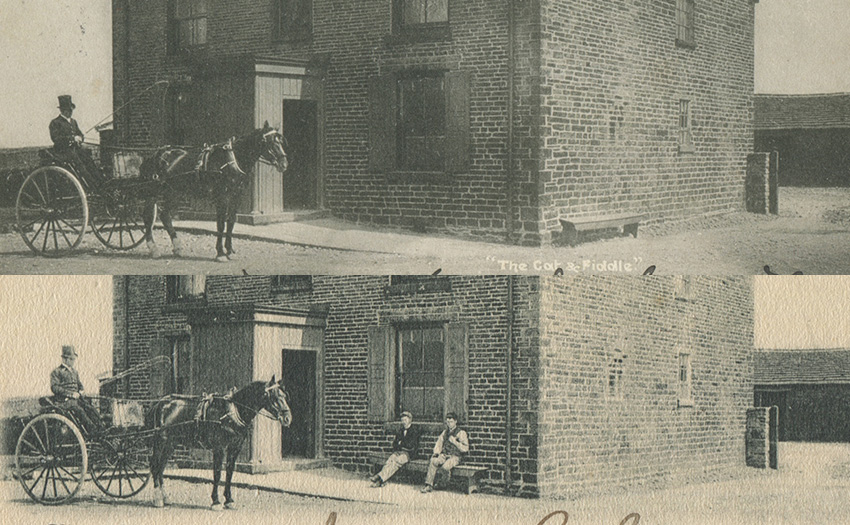
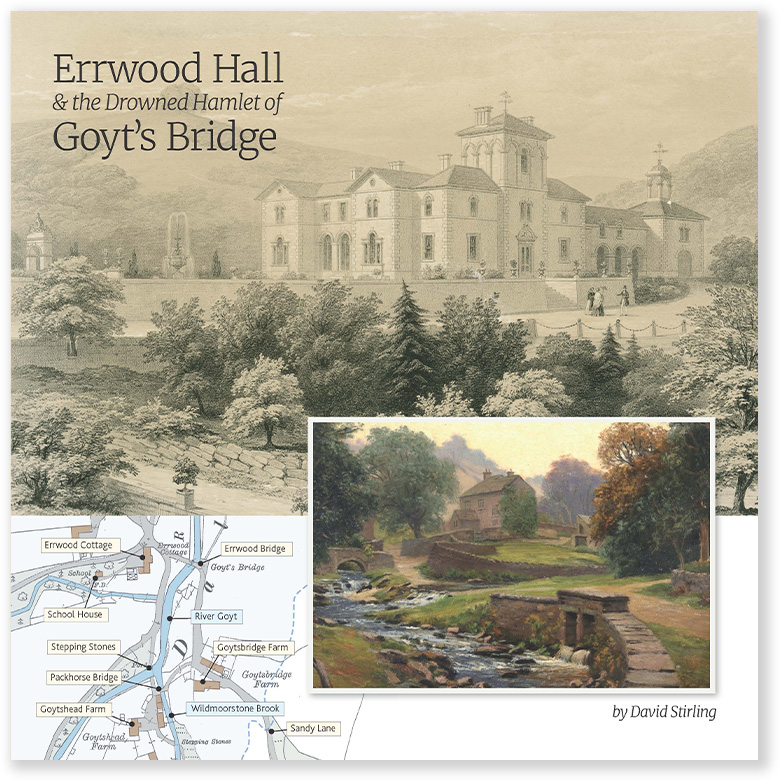
Interesting to look at the site as a regular walker in the Goyt Valley. I rarely fail to think about my Dad when I walk there. When he left school in 1926, his first job was as an apprentice butcher for Elijah Hall in Whaley Bridge. One of his jobs was to deliver meat to Erwood Hall by pony and trap. He was only 15 at the time and said that the trip up the valley in winter in the dark was a scary journey for a solitary 15 year old – no street lights and imagined threats with every noise emanating from the surrounding countryside!
In relation to the path in the postcard above, I am fairly confident that this is the path now used to approach the ruins from the bottom car park by the reservoir, at the point where it joins the original main drive up to the hall. Certainly the angle at which it diverges looks about right.
I see what you mean, David. I was meaning that this is the view towards where the car park now is, which would make the path on the right the current path to the car park, with stream on the left.
James; I took a photo at the point you suggested – and you’re completely right. Click here to view a fade between both old and new.